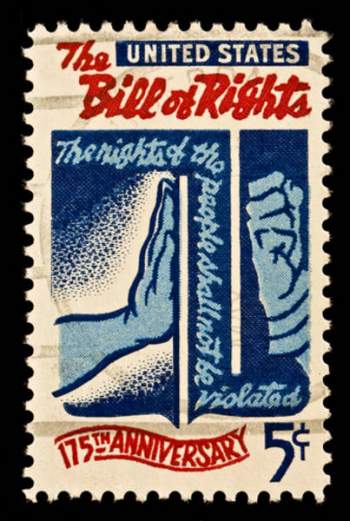
An Overview of the Bill of Rights

Popular In Constitution
Purpose Of Lifetime Appointment And Pros And Cons Enumerated Powers Bicameral Legislature Background Article 3 Of The Constitution We The People 1st Amendment Who Wrote The Constitution Judicial Review Equal Protection Clause Three Fifths Compromise 10th Amendment 5th Amendment
What is the Bill of Rights?
Upon its ratification on September 17th, 1787, the Constitution of the United States was considered to be the primary legislative document expressing the implicit legality and jurisdictional procedure within the United States of America. The Bill of Rights – proposed in 1789, and subsequently ratified in 1791 – is the classification granted to the first 10 Constitutional Amendments to have been passed; these Amendments were passed in unison.
The History of the Bill of Rights
George Mason and James Madison are the 2 individuals primarily credited with the creation of the Bill of Rights, resulting from a collective concern addressing the lack of a Constitutional Clause providing the document with a procedural system for modifications and adjustments with regard to the original text. George Mason and James Madison had understood that as the United States underwent progression, innovation, and an invariable paradigm shift, certain legal statues would require modification; in order to retain the innate framework of the Constitution of the United of the United States while allowing for measures of adjustment and modernization, a policy was implemented with regard to the adoption of future – and potential - Constitutional Amendments
The Contents of the Bill of Rights
1st Amendment
Date Proposed: September, 25th 1789
Date Ratified: December 15th, 1791
Contents of the Amendment: This Amendment affords citizens of the United States with the freedom of religion, the freedom of press, the freedom of speech, and the right of assembly
2nd Amendment
Date Proposed: September, 25th 1789
Date Ratified: December 15th, 1791
Contents of the Amendment: The right to bear arms in a lawful manner with regard to self-protection; firearms covered under the 2nd Amendment do not address service within the Militia
3rd Amendment
Date Proposed: September, 25th 1789
Date Ratified: December 15th, 1791
Contents of the Amendment: The 3rd Amendment prohibits unlawful entry with regard to private resident(s) in possession of citizens of the United States of America; the 3rd Amendment is not typically applicable to times of war
4th Amendment
Date Proposed: September, 25th 1789
Date Ratified: December 15th, 1791
Contents of the Amendment: The 4th Amendment prohibits the unlawful search and seizure of resident belonging to citizens of the United States of America; this amendment also defines the rights of privacy awarded to citizens of the United States
5th Amendment
Date Proposed: September, 25th 1789
Date Ratified: December 15th, 1791
Contents of the Amendment: The 5th Amendment addresses the modern incarnation of the ‘Right to remain silent’; this Amendment also prevents the unlawful and unethical abuse of power undertaken by a governing body
6th Amendment
Date Proposed: September, 25th 1789
Date Ratified: December 15th, 1791
Contents of the Amendment: The 6th Amendment addresses legal procedure undertaken with regard to the prosecution – and investigation – of alleged criminal activity; this Amendment includes the right to a judicially-sound trial
7th Amendment
Date Proposed: September, 25th 1789
Date Ratified: December 15th, 1791
Contents of the Amendment: The 7th Amendment affords individuals undergoing judicial trials with the right to be tried in accordance with the presence of a jury; juries present within judicial trials are indicated to consist of an individual’s ‘peers’
8th Amendment
Date Proposed: September, 25th 1789
Date Ratified: December 15th, 1791
Contents of the Amendment: The 8th Amendment addresses legal criminal procedure; this Amendment prohibits punitive recourse classified as ‘cruel and unusual’ with regard to prosecution, as well as the prohibition of an excessive bail process
9th Amendment
Date Proposed: September, 25th 1789
Date Ratified: December 15th, 1791
Contents of the Amendment: The 9th Amendment serves as legislative protection with regard to corollary Amendments within the Bill of Rights; this Amendment disallows for the violation of civil liberties and unlawful expansion of governmental power
10th Amendment
Date Proposed: September, 25th 1789
Date Ratified: December 15th, 1791
Contents of the Amendment: The 10th Amendment addresses the apportionment process latent within administrative responsibilities; this Amendment expressed that any or all administrative powers that have not been claimed by Federal or State governments become the responsibility of the general populace


















